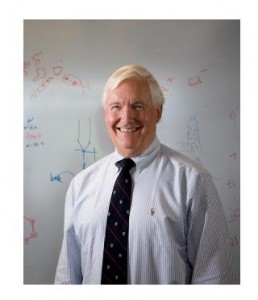Investigator Spotlight: September 2014

Garry Fathman, MD
Dr. Fathman is a professor at Stanford University School of Medicine. Dr. Fathman joined nPOD in 2008.
-
Tell us about your education and background – where are you from, where did you go to school?
I grew up in Missouri, initially on a farm along the Mississippi River in Clarksville, Missouri, and then moved to St Louis when I started 7th grade. I graduated from Washington University School of Medicine in St Louis in 1969.
- Where do you currently work and what is your position? What does a “day in the life” look like for you?
I am currently a Professor of Medicine in the Division of Immunology and Rheumatology in the Department of Medicine at Stanford University School of Medicine. Shortly after my 70th birthday, I stepped down as Division Chief and no longer see patients in the clinic or hospital but spend my time overseeing a very active lab. - Why diabetes? How did you get involved in diabetes and/or what made you want to work in diabetes research?
As a clinician scientist, my main interest is in the field of autoimmunity. Although I trained as a rheumatologist, I have always been interested in the underlying causes of autoimmunity, why does the body’s immune system attack itself, and how can we as physicians intervene before end organ destruction? Rheumatoid arthritis (RA) is an autoimmune disease that for years was a disease that announced it presence to physicians by clinical signs and symptoms. With the use of modern molecular biological assays, it is now possible to identify patients who are going to develop RA years before the onset of symptoms or signs of inflammation. The question of who to screen for the markers of disease is the major issue given the costs of large screening efforts. My interest in diabetes stemmed in part from the work of others (funded in large part by the JDRF and the NIDDK) who collected tissue samples from patients with type 1 diabetes (T1D) and or their relatives through both nPOD and TrialNet. By using the same logic that allowed the identification of RA patients years before symptoms or signs appeared clinically, my current studies are attempting to identify markers of disease progression (biomarkers) that may allow staging and identify progression among first degree relatives of patients who have T1D using blood and tissue samples collected as part of nPOD or the TrialNet Natural History Study. My hope is to identify biomarkers that both stage disease and can be used to track disease progression. - Tell us about your research.
Unlike the genome wide association studies (GWAS) that identify mutations or polymorphisms in genes that are associated with T1D at the DNA level my studies are devoted to looking at the genes that are actually used during disease progression. Our lab likes to say, it’s not the genes you have, it’s the genes you use that cause disease. To look at the usage of genes in tissues, we examine tissues like the pancreatic lymph nodes (lymph nodes that drain the pancreas) or whole blood from T1D patients or first degree relatives of T1D patients to look for tissue-specific and disease-related mRNA, the transcribed information from the genome that is used in a cell/tissue specific way. Though we all have 30,000 or so genes, not all genes are used in every tissue and each gene can be “used” in several ways depending upon the way the genetic information (DNA) is processed into mRNA. Using pancreatic lymph node tissue samples collected as part of the nPOD initiative, we have preliminary data that suggest that by studying the mRNA (gene expression) in selected tissues, there may be a signature of disease that can be used to stage the disease (will the individual progress to hyperglycemia or not) in autoantibody positive not yet glucose intolerant individuals and possibly identify biomarkers of disease progression. We are about to begin studies of whole blood mRNA to ask similar questions about using peripheral blood, a tissue much more amenable to biomarker studies, to identify biomarkers of disease progression. The purpose of these studies is to identify biomarkers that will allow identification of those autoantibody positive individuals who will progress to T1D versus those who will not to allow appropriate selection of subjects for intervention trials. -
What are your thoughts on the progress being made in T1D research as a whole?
I think we are beginning to think a little more about disease prevention rather than cure and this is, in my opinion, long overdue.
- Why is diabetes research so important?
The disease is not only increasing in frequency worldwide, but it predominantly affects young children. - Do you have anything extra you would like to share? Is there anyone to thank or acknowledge?
The more common diseases (cancer and heart disease), draw the most attention for philanthropic and federal funds. Absent the enormous support from the diabetes community, much of the pioneering work in T1D research and the training of the next generation of diabetes researchers would not have been possible. - When you’re not working, what do you like to do for fun?
I am an avid fly fisherman and enjoy hiking around the California foothills and spending time at our cabin at Lake Tahoe.
